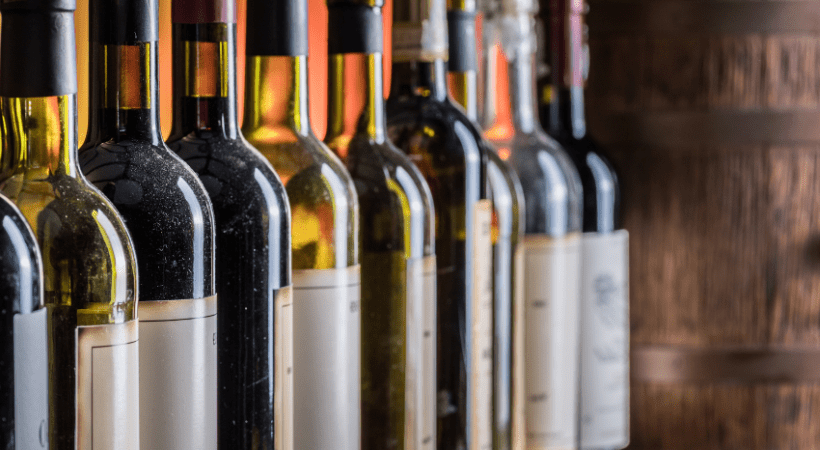How to Comply with New EU Labelling Regulation for Wine Products
How to Comply with New EU Labelling Regulation for Wine Products
From the 8th December 2023, Regulation (EU) 2021/2117 dictates that wine and wine products sold in the EU must now provide detail about the ingredients used and nutritional information.
Our regulatory experts help us to read between the wines to understand exactly what this new legislation means, and how you can ensure you remain compliant.
Contents:
- What new information is required in the new EU wine labelling regulation?
- The potential of electric information
- What language should be used for the ingredients and nutritional information about wine?
- Where do the wine labelling regulations apply?
- What’s the deadline for compliance with the regulation?
- What does ‘produced’ mean and how does this impact compliance dates?
- Do these regulations apply to low alcohol wines and other alcoholic beverages?

To date, legislation around wine products hasn’t required producers to present nutrition information via labels as they do for food products – some may call it a historical hangover. That said, many have chosen to share it on a voluntary basis in line with other items they might have on the market. But a new law has recently been implemented regarding wine products sold in the EU.
The legislation is driven by Europe’s Beating Cancer Plan, which outlined an introduction of additional information becoming mandatory on alcoholic drink labels. So, from 8th December 2023, all producers or retailers selling wine products in the EU must comply with these changes.
What new information is required in the new EU wine labelling regulation?
The new regulation (EU) 2021/2117, states that the following must be provided with a wine product:
Mandatory on the physical label:
- Energy value – in both kilojoules and kilocalories, and indicated by an ‘E’
- Any allergens present must be clearly identified
This is in addition to existing labelling requirements such as alcoholic strength and indication of provenance.
Mandatory on the physical label OR electronically, e.g. via QR code or a URL on the label:
- List of ingredients, preceded by the heading ‘ingredients’
- The nutrition declaration as regulated in Article 34 of the FIC Regulation
The potential of electronic information
One of the most interesting aspects of this new regulation is the flexibility about where and how the full nutritional declaration and ingredient list can be presented. It stipulates that either on the label or via electronic communication, such as a QR code, is sufficient. However, if provided electronically, the website or app is forbidden from sharing any sales or marketing content (including additional links to a brands website), as well as tracking or storing consumer data.
Encouraging the use of off-pack channels for consumer communication reflects an evolving attitude to labelling. As consumers are seeking more information about the products they purchase, electronic platforms provide a fantastic solution to the sharing of this wealth of knowledge – enhancing their understanding and empowering them to make informed decisions. Plus, it helps producers to share an increasing amount of content without having to sacrifice space or other important (but voluntary) aspects of the label. Not to mention, it can be updated regularly without significant cost or waste implications and can satisfy the needs of almost all consumer demands.
It will be interesting to see how this space evolves – we expect off-label will continue to be used for additional product information, but elements like allergens will remain on-pack.
What language should be used for the ingredients and nutritional information about wine?
When applying this information, another key consideration is the language used. As with other mandatory information, it must be provided in one (or more) of the 24 official languages of the EU and easily understood by the consumer. For products being sold within multiple EU markets, this information would need to be presented in the language best suited to where it was intended to be sold. For example, a wine sold in France and Northern Ireland would need to have the nutritional declaration and ingredient list in both French and English, so essentially considering multi-lingual labelling rules.
Where do the wine labelling regulations apply?
Currently these new rules aren’t applicable in Great Britain, you can read more about UK alcohol labelling regulations here. However, products sold in Northern Ireland will need to comply, as will any products exported into the EU.
But as we know, many manufacturers sell within multiple markets and so we may start to see this emerge in Great Britain by those who will adopt a universal approach. And, if successful, there’s potential that this will be rolled out in other countries too, so it’s important to keep up-to-date regardless of whether it directly impacts you right now or not.
What’s the deadline for compliance with these regulations?
Wine produced in the EU or imported to the EU before the 8th of December 2023 is exempt and can be sold until stock is exhausted. From this date, all wines must comply.
What does ‘produced’ mean and how does this impact compliance dates?
The new law officially states that wine produced after 8th December 2023 will be subject to these changes. But the term ‘produced’ can mean different things depending on the type of wine, with some wines undergoing multiple stages (such as two-part fermentation of sparkling wine). To provide further clarity as to what exact point the regulation applies, the European Union Commission (EC) published a Q&A on the 24th November about this regulation. It determined that the completion of production includes alcohol fermentation and for sparkling wine, this includes the necessary second fermentation, as well as achieving other characteristics – such as acidity content, preservation and refinement.
In practice, this means that wine products that completed first fermentation prior to 8th December, but second fermentation on or after 8th will have to comply with the new rules.
Do these regulations apply to low alcohol wines and other alcoholic beverages?
For low alcohol or ‘de-alcoholised’ wine, the same regulations apply. The new regulations do not apply to alcoholic beverages such as beer and spirits, however, some brands voluntarily provide this information. Our regulatory experts wouldn’t be surprised if these rules became mandatory across all alcoholic beverages at some point.
With this new law already in effect, businesses must be vigilant in ensuring compliance with products being sold within EU markets. Whether you’re an exporter, a retailer, or even a consumer, here’s what you need to do:
- If you’re exporting a wine (or wine product) to the EU, double check that your labels are compliant with these new requirements.
- If you’re a retailer selling in the EU and/or Northern Ireland, ensure your suppliers are meeting these requirements.
- If you’re a consumer, don’t be surprised to see some of these requirements appearing on-pack – even in Great Britain.
For more information about how this regulation change might impact your business and to ensure you’re remaining compliant, our team can provide regulatory advice or label reviews. Do get in touch: hello@ashbury.global.

Author: Rebecca Kaya
I have dedicated over 17 years' of my career to keeping end consumers safe. As a Regulatory Specialist, I help clients to have confidence in their compliance by providing practical advice across the food chain - from the point of primary production, to final product labelling.
Next reads
What’s Next for Food & Drink? Our Experts’ Predictions for 2026
The Peanut Diaries: School and Social Occasions
The Peanut Diaries: Navigating Social Events and Celebrations with Food Allergies
The Peanut Diaries: A Parent’s Journey to Uncovering their Child’s Allergy
Keep up to date with our latest insights
Subscribe to our mailing list to stay in touch with the latest news, insights and updates from Ashbury




